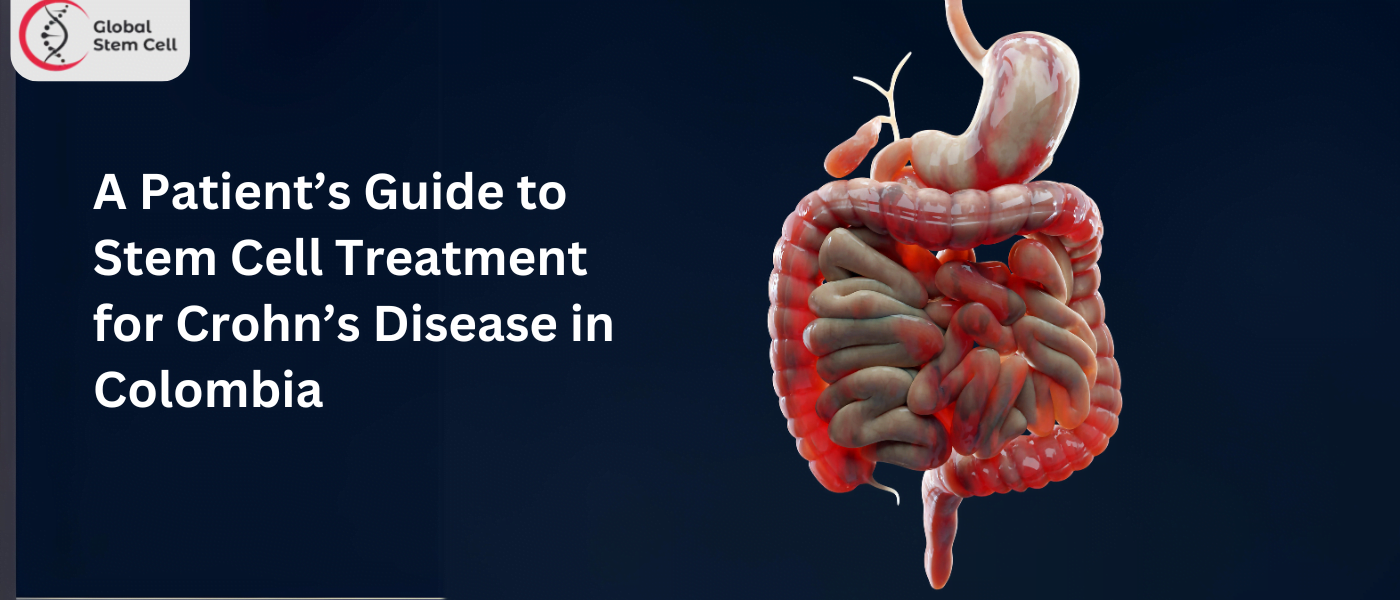
Revolutionizing Crohn’s Disease Treatment with Stem Cell Therapy in Mexico
Tabel de conținut
Crohn’s Disease, a chronic inflammatory bowel disorder, has long been a challenging condition for both patients and medical professionals. Conventional treatments often focus on symptom management rather than addressing the root cause of the disease.
However, a promising breakthrough has emerged in the form of Terapia cu celule stem, particularly in Mexico, where innovative medical approaches are gaining global attention. This blog post explores the intricacies of Stem Cell Therapy in Mexico and its profound impact on Crohn’s Disease patients.
Understanding Crohn’s Disease
Crohn’s disease is a chronic inflammatory bowel disease (IBD) that can affect any part of the gastrointestinal (GI) tract, from the mouth to the anus. It is named after Dr. Burrill B. Crohn, who first described the condition in 1932. Crohn’s disease is characterized by inflammation of the digestive tract, which can lead to a variety of symptoms and complications.
Here are some key points to help you understand Crohn’s disease:
Cause:
- The exact cause of Crohn’s disease is not well understood. It is believed to result from a combination of genetic, environmental, and immune system factors.
- Genetics play a role, as people with a family history of the disease are at a higher risk.
Simptome:
- Common symptoms include abdominal pain, diarrhea, weight loss, fatigue, and fever.
- The severity of symptoms can vary, and periods of remission may be interspersed with flare-ups.
Affected Areas:
- Crohn’s disease can affect any part of the GI tract, but it most commonly involves the end of the small intestine (ileum) and the beginning of the colon.
Inflammation:
- Inflammation in Crohn’s disease can extend deep into the layers of affected bowel tissue, leading to the formation of ulcers and other complications.
Complications:
- Complications may include strictures (narrowing of the intestine), fistulas (abnormal connections between different parts of the intestine or between the intestine and other organs), and abscesses.
Diagnosticul:
- Diagnosis involves a combination of medical history, physical examination, blood tests, imaging studies (such as CT scans or MRIs), and endoscopic procedures (colonoscopy or upper endoscopy).
Stem Cell Therapy – A Paradigm Shift in Treatment
Stem cell therapy represents a promising and evolving field in medicine, offering potential breakthroughs in the treatment of various diseases and conditions. Stem cells are unique cells with the ability to differentiate into specialized cell types and self-renew, making them crucial for tissue repair and regeneration.
The use of stem cells in therapy is considered a paradigm shift due to their regenerative potential. Here are key aspects to understand about stem cell therapy:
Types of Stem Cells
- Celule stem embrionare (ESC): derivate din embrioni, aceste celule au potențialul de a se diferenția în orice tip de celulă din organism
- Adult or Somatic Stem Cells: Found in various tissues and organs, these cells can differentiate into specific cell types related to their tissue of origin.
- Celule stem pluripotente induse (iPSC): Adult cells reprogrammed to have embryonic stem cell-like properties.
Applications in Medicine
- Regenerative Medicine: Stem cells can repair or replace damaged tissues and organs.
- Treatment of Diseases: Ongoing research explores the use of stem cells for conditions such as heart disease, neurodegenerative disorders (e.g., Parkinson’s disease), diabetes, and autoimmune diseases.
Bone Marrow and Hematopoietic Stem Cells
- Bone Marrow Transplants: Hematopoietic stem cells from bone marrow are used to treat certain cancers, such as leukemia and lymphoma, as well as blood disorders.
- Blood Cell Formation: Hematopoietic stem cells give rise to various blood cell types.
Neural Stem Cells
- Tulburări neurologice: Neural stem cells show potential for treating conditions like spinal cord injuries, stroke, and neurodegenerative diseases.
Celule stem mezenchimale (MSC)
- Anti-inflammatory Properties: MSCs have immunomodulatory effects, making them relevant in treating conditions involving inflammation, such as autoimmune diseases.
Why choose Mexico for Stem Cell Therapy for Crohn’s Disease?
Mexico has emerged as a hub for Stem Cell Therapy due to its progressive regulatory environment, cutting-edge medical facilities, and experienced healthcare professionals. Stem cell clinics in Mexico adhere to strict ethical guidelines, ensuring patient safety and well-being.
Additionally, the cost of Stem Cell Therapy in Mexico is often more affordable compared to other countries, making it an attractive option for international patients seeking alternative treatments.
The Process of Stem Cell Therapy for Crohn’s Disease
- Evaluarea pacientului: Before undergoing Stem Cell Therapy, patients undergo a comprehensive evaluation to determine their eligibility. This includes a thorough medical history, diagnostic tests, and consultation with medical experts.
- Harvesting Stem Cells: Stem cells can be obtained from various sources, such as the patient’s own bone marrow or adipose tissue. In some cases, donated umbilical cord stem cells may be used. The harvesting process is minimally invasive and generally well-tolerated.
- Prelucrarea în laborator: The harvested stem cells are processed in a specialized laboratory to concentrate and purify them. This step ensures that the therapeutic cells are optimized for maximum efficacy.
- Stem Cell Infusion: Once processed, the concentrated stem cells are infused back into the patient’s body. This can be done through intravenous (IV) infusion or localized injections, depending on the specific treatment protocol.
- Monitorizare și urmărire: Patients are closely monitored post-treatment to assess their response and address any potential side effects. Follow-up appointments and ongoing support are integral parts of the Stem Cell Therapy process.
Provocări și direcții viitoare
Despite the encouraging outcomes, it’s essential to acknowledge the challenges and ongoing research in the field of Stem Cell Therapy for Crohn’s Disease. Large-scale clinical trials are needed to establish the safety and efficacy of this treatment fully. Additionally, individual responses to the therapy may vary, emphasizing the importance of personalized treatment plans.
Stem Cell Therapy in Mexico represents a groundbreaking approach to addressing the root cause of Crohn’s Disease. While further research is warranted, the early successes and patient testimonials underscore the potential of this innovative treatment.
As the medical community continues to explore alternative therapies, Stem Cell Therapy stands out as a beacon of hope for those seeking a transformative and holistic approach to managing Crohn’s Disease.
With Mexico at the forefront of this medical revolution, the future looks promising for patients in search of effective and innovative treatments for this challenging condition.





